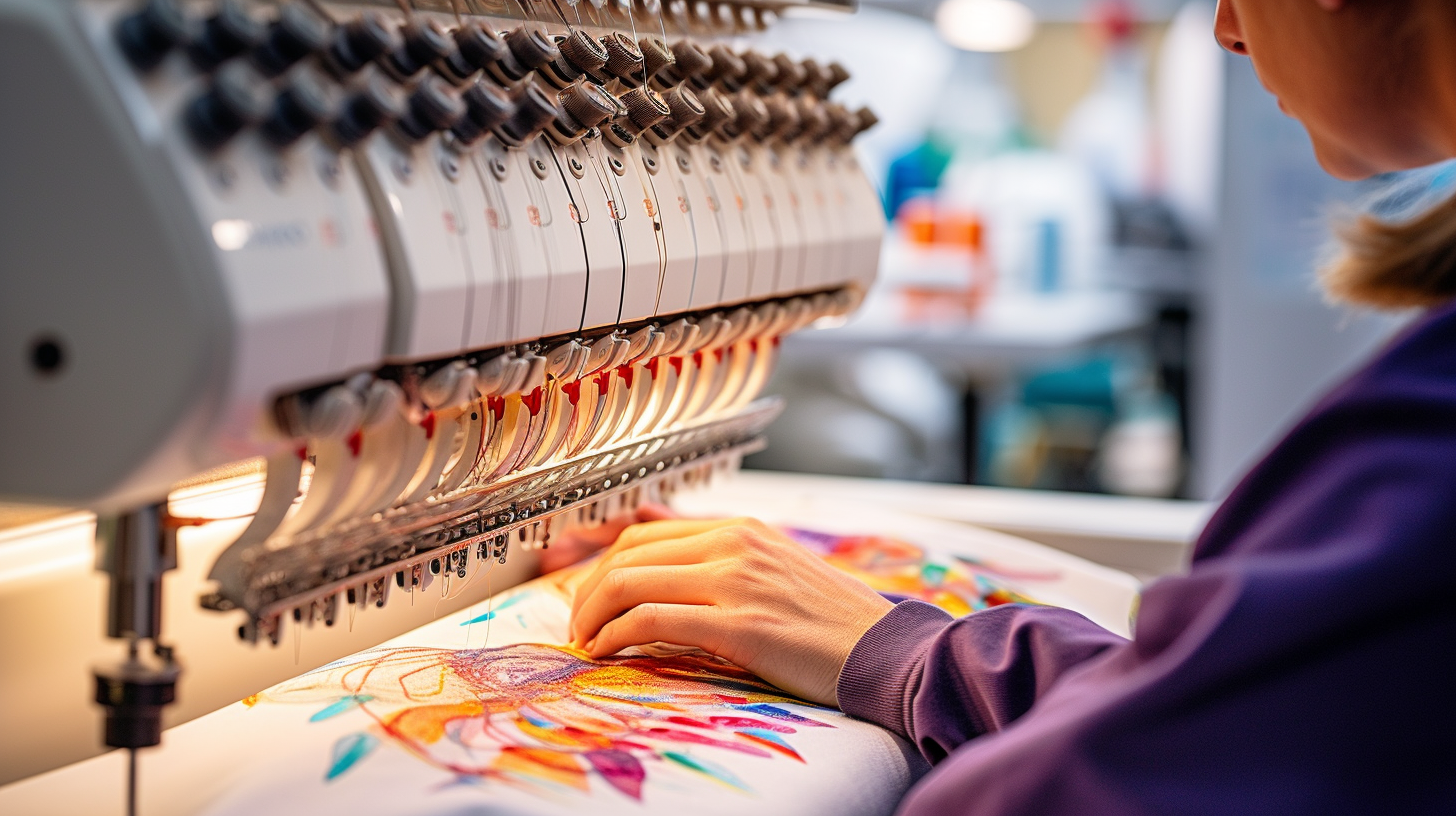Premier Digitizing for Embroidery: Perfect Stitch Every Single Time
Premier Digitizing for Embroidery: Perfect Stitch Every Single Time
Blog Article
Discover Various Sorts Of Needlework Digitizing Techniques
Needlework digitizing has progressed significantly for many years, offering a myriad of methods to bring layouts to life in the digital realm. From the complex artistry of typical hand embroidery digitizing to the accuracy of the boxing technique, and the comfort of auto-digitizing software application, the options are huge. Moreover, the realm prolongs to more advanced methods like photorealistic needlework digitizing and the remarkable world of 3D needlework digitizing. Each method brings a special collection of opportunities and challenges to the table, making the exploration of these methods a compelling journey for those in the embroidery world.
Standard Hand Needlework Digitizing
Standard hand embroidery digitizing involves the process of transforming detailed hand-stitched layouts right into electronic styles for device embroidery. This technique calls for proficient craftsmens to diligently assess the handmade style and afterwards use specialized software application to recreate it in a digital format. Each stitch, color, and detail must be carefully translated to make sure that the significance of the original hand embroidery is protected in the electronic variation.
Among the essential challenges of typical hand needlework digitizing is catching the ins and outs and nuances of the handmade layout. Digitizing for Embroidery. Artisans must possess a deep understanding of different embroidery strategies, such as satin stitch, chain stitch, and French knots, to accurately reproduce these methods in the digital world. Additionally, they require to have a keen eye for detail to make sure that the digital style maintains the very same level of virtuosity and workmanship as the initial hand-stitched piece
Punching Method
To flawlessly shift from traditional hand needlework digitizing to the punching method, craftsmens should currently focus on transforming the complex electronic designs into guidelines that embroidery makers can interpret. The punching technique includes making use of specialized software application to produce electronic files which contain commands for the needlework device to adhere to. This procedure requires a deep understanding of not simply the layout itself but likewise the capacities and constraints of the needlework equipment.

Auto-Digitizing Software Program Programs
Embroidery digitizing has been reinvented by the development of auto-digitizing software application, offering artisans with sophisticated tools to convert electronic styles into needlework machine directions effectively. Auto-digitizing software application make use of algorithms to evaluate digital photos or vector documents and generate needlework layouts instantly. These programs permit quick and accurate conversion of intricate designs right into stitch patterns, conserving time and effort for embroiderers.
One of the essential advantages of auto-digitizing software program straight from the source is its straightforward user interface, making it available to both novices and skilled digitizers. These programs usually consist of functions such as stitch editing devices, thread color matching, and the capacity to sneak peek the final stitched style. Additionally, auto-digitizing software can manage complicated designs with numerous colors and detailed information, producing high-quality needlework data ideal for different clothing and textile jobs.
While auto-digitizing software application uses benefit and performance, it is necessary for users to recognize the limitations of automated digitizing. Fine-tuning and hand-operated adjustments might still be required to attain the desired needlework quality, specifically when dealing with complex or unique layouts. By leveraging the capabilities of auto-digitizing software application along with hands-on digitizing techniques, artisans can boost their embroidery digitizing process and develop spectacular stitched items.
Photorealistic Embroidery Digitizing
Using innovative digital imaging strategies, achieving photorealistic lead to embroidery digitizing has come to be a sought-after skill amongst modern-day artisans. This technique includes converting high-resolution photos into elaborate stitch patterns that carefully resemble the original design, leading to embroidery items that show natural detail and deepness.
To accomplish photorealistic embroidery digitizing, artisans should possess an eager eye for information and a comprehensive understanding of exactly how various stitch types and thickness can affect the final result. By very carefully drawing up each shade and color in the picture, embroiderers can produce an electronic data that overviews the needlework machine to replicate the nuances of the original picture accurately.
Photorealistic embroidery digitizing is especially popular in creating custom-made styles for clothing, home style, and visit their website art items where capturing the significance of a photograph or art work is essential. This technique allows artisans to change memories, landscapes, pictures, and complex artwork into stunning embroidered work of arts that display a mix of standard workmanship and innovative technology.
3D Embroidery Digitizing
With the advancement of electronic imaging techniques in attaining photorealistic lead to embroidery digitizing, the exploration of 'D Needlework Digitizing' uses a new dimension to the ins and outs of style replication. 'D Needlework Digitizing' describes the three-dimensional digitizing strategy that includes depth and texture to embroidery designs, developing a much more reasonable and aesthetically attractive end product. This method uses software that imitates the impact of light and darkness on the embroidery layout, improving its overall aesthetic influence.
One of the vital benefits of 'D Needlework Digitizing' is its capability to make layouts look more natural and dynamic. By including depth to the needlework design, the end product appears extra sensible and captivating (Digitizing for Embroidery). Furthermore, this technique enables more innovative freedom in style implementation, allowing embroiderers to trying out different appearances and effects that were formerly testing to achieve
Verdict

Report this page